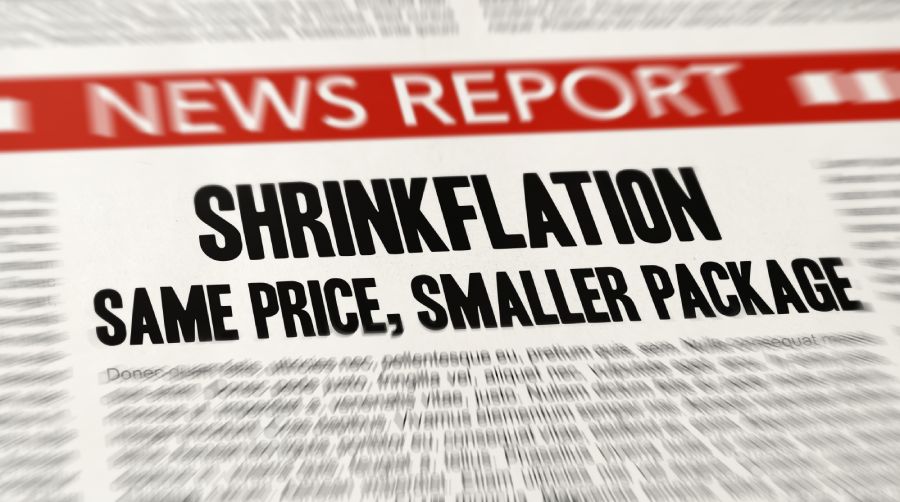
A fashion business can be an exciting prospect—industry revenues worldwide and in the US are enormous, with expectations for continued growth. In fact, the US is one of the biggest global players in fashion, rivaled only by China. If you’re considering starting a business, you could hardly choose a more lucrative field. However, the fashion industry is broad and segmented; unless you know how things stand, deciding where to start or how best to turn a profit can be difficult.
The fashion statistics we compiled below can help you gain some insight into the industry.
Key Takeaways:
- Global revenue for the fashion industry is set to exceed $770 billion; US revenue accounts for nearly $360 billion.
- Global spending on clothing and footwear will hit $3 trillion within a few years.
- Price is the greatest consideration for American shoppers when purchasing clothing and footwear.
- Keep an eye on up-and-coming fashion trends. Some examples are sustainable clothing, smart fabrics, and digital fashion.
Fashion Industry Revenue & Performance
The fashion industry is robust, with sizable market volumes, revenues, and annual growth. If you perform sufficient market research, differentiate your products or services from competitors, and keep abreast of customers’ priorities and circumstances, the fashion industry can be a lucrative place in which to start a small business.
1. Global revenue for the fashion industry in 2024 is expected to exceed $770 billion
Revenue for the fashion industry worldwide is projected to hit $770.90 billion in 2024. The compound annual growth rate (CAGR) is expected to show 8.94% until 2029, indicating solid growth for the next several years.
2. In the global apparel market, the US generates one of the highest national revenues
The US alone accounts for $358.70 billion in revenue in 2024, and the market is expected to grow by 2.11% until at least 2028. Revenue generated per person is at a little over $1,000 in 2024. Globally, only China surpasses the US in terms of demand and revenue in the fashion industry. So if you’re planning to start an apparel business in the US, there will be plenty of opportunities to score a decent profit—as long as you know what buyers want and you can deliver it.
3. US online clothing, footwear, and accessories sales will reach nearly $160 billion by 2025
In the US, ecommerce sales of apparel, footwear, and accessories are set to hit a total of $159.4 billion by 2025. This figure is expected to rise to over $219 billion by 2029. If you’re trying to boost your apparel business’ sales, don’t neglect online sales channels.
4. As of late 2023, the top concern for fashion industry executives was geopolitical instability
Conflicts in Europe and the Middle East were among the factors contributing to the concern over political stability; around 62% of executives shared this top concern. With geopolitical events largely influencing international trade and global supply lines, plus increasing inflation and pressure on household incomes in 2024 and beyond, both supply and demand sides are affected.
Fashion Industry Production & Consumption
Production and consumption patterns in the fashion industry can vary wildly. Not all segments of the market perform equally well, for example. Overall, however, both the production and consumption of clothing and footwear (and their necessary raw materials) have been rising, indicating that the global fashion industry is still lucrative and will likely remain so for a long time.
5. In 2022, global production of textile fibers reached nearly 114 million metric tons
About 113.8 million metric tons of textile fibers were produced worldwide in 2022. This included over 87 million metric tons of chemical or synthetic fibers, with the remaining share being natural fibers like wool and cotton. While this indicates uneven demand for different fibers (and thus clothing), the overall global production of fibers has been increasing steadily since around 2008.
6. Global spending on clothing and footwear is projected to hit nearly $2.9 trillion by 2029
Total consumer spending on clothing and footwear worldwide is expected to rise continuously from 2024 onward, culminating in a total spend of about $2.8 trillion by 2029. Ever since a minor dip in 2020, when the figure was at about $1.8 trillion, overall consumer spending has been climbing nonstop.
7. In the US, the women’s apparel segment exceeded $191 billion in value
This segment alone reached a 2024 revenue of $191.4 billion, growing at 2.1% annually. Men’s apparel was at $113.5 billion, with a 2.2% yearly growth.
8. Luxury clothing is poised to grow at a higher rate than the non-luxury segment
Globally in 2024, growth for the luxury apparel segment is forecast at 3%-5%, according to a McKinsey study. This is lower than the segment’s 2023 performance, which was at 5%-7%. In the US, non-luxury clothing is expected to grow at a slower 0%-2% for 2024.
The report speculates that this slowdown might be due to reduced consumer confidence and lower household savings. If you want to continue to appeal to non-luxury clothing consumers, hone in on your pricing strategies to deliver value and consider discounts and deals to reignite spending.
9. Among luxury fashion brands in the US, the most popular in 2024 are Gucci and Louis Vuitton
A survey by Statista found that Gucci and Louis Vuitton are the most popular luxury fashion brands among US consumers; each one scored 45% popularity among consumers who know of the brand. Runners-up included Chanel and Dior (40% popularity each) and Burberry (39%).
10. Employment of fashion designers is expected to grow 3% from 2022 to 2032
Companies are projected to hire fashion designers at a rate of 3% until 2032—corresponding to a little over 2,000 job openings for this position per year. This increase is about as fast as the average for other occupations in the US.
11. As of May 2023, the median yearly wage for fashion designers was $79,290
Designers who worked in apparel manufacturing had a median annual wage of around $75,000. But designers who worked in company management, motion picture, and video production earned much more—around $98,000.
Fashion Industry Consumer Spending & Behavior
Consumer spending and behavior when buying fashion items tend to be straightforward. Buyers are generally clear about what they prioritize, when and how much they spend, and what they like. Becoming familiar with these patterns and preferences will be helpful for fashion retailers looking to grow their businesses.
12. Monthly sales of clothing in the US tend to spike every December
Since at least 2018, apparel store sales in the US increase in December, followed by a sudden dip the following month. During the holidays, people buy more new clothing to wear at gatherings or to give as gifts; in fact, clothing is the most common type of gift consumers plan to give during holidays, followed by gift cards and then toys. In December 2023, retail sales of clothing hit nearly $26.9 million.
Apparel retail sales in the US tend to follow a consistent pattern throughout the year. (Source: Statista)
13. American shoppers prioritize pricing when they purchase clothing and footwear
As of 2023, price was the top consideration for shoppers in the US when buying clothing and footwear. While less crucial than price, other factors included user-generated content such as product ratings, reviews, and images shared by previous buyers.
14. Neutral colors were the most popular choice of clothing color scheme for US consumers in 2022
In summer 2022, survey respondents in the US reported that their favorite color scheme for clothing was neutral colors—white, black, and gray, for example. Jewel-toned color schemes placed a far second in popularity.
15. Consumers in North America buy about 7 pairs of shoes every year
North American consumers purchase 7.4 pairs of shoes each year, spending around $32 for each pair. Around the world, about 24 billion pairs of footwear were produced in 2022. The US is the largest importer, having imported about 2.7 billion pairs that year.
16. A fifth of survey respondents made a recent splurge purchase of clothing or accessories
Eighty percent of US respondents to a survey admitted to at least one splurge purchase to treat themselves. Among these respondents, 21% splurged on clothing and accessory items, surpassed only by food and beverage splurge purchases.
Buyers in the US typically spend around $50 per splurge purchase on categories excluding food and beverage. However, something interesting happens once buyers pass the $100 spending mark: the practicality of the clothing they buy becomes less important, and they instead focus on self-expression as their primary motivation for buying.
Fashion Industry Trends
One of the predominant trends in the fashion industry is concern for sustainability; many buyers want to know that the clothes they purchase are being made in ways that don’t harm the environment. At the same time, technological advancements such as artificial intelligence (AI) are creating new and immersive experiences for shoppers.
17. In 2021, the apparel industry generated nearly 900 million metric tons of greenhouse gas emissions
The fashion industry is often considered one of the worst-polluting industries. In 2021, it generated about 897 million metric tons of emissions such as carbon dioxide. If the industry does not make any changes, this figure is expected to reach around 1.3 billion metric tons by 2030. Trends like this are why many consumers are beginning to turn to alternatives such as the circular approach to fashion.
18. In 2022, sustainable clothing exceeded a 4% share in the global market
Sustainably made clothing reached a 4.3% market share in 2022. While this is not a huge market share, it is an increase from 2017 when the figure was at 2.83%—indicating that the overall interest in sustainably produced clothing is climbing steadily, if not rapidly.
19. The ethical fashion market is expected to exceed $11 billion in value by 2027
Ethical fashion—referring to fashion items created using sustainable, renewable, and regenerated materials—is poised to hit almost $11.2 billion in value by 2027, growing at 8.1%. The market for ethical fashion is expected to continue its momentum, reaching $16.8 billion by 2032.
20. Millennials are projected to be the biggest buyers of sustainable clothing
By 2027, millennials are forecast to be the generation with the largest market share of the sustainable clothing market in the US. Generation Z is predicted to claim more than one-third of the same market.
21. Nearly 40% of survey respondents considered sustainability at least slightly important when buying clothing
For 39% of consumers surveyed, sustainability was at least slightly important. Meanwhile, a little less than one-third of respondents were neutral about the idea of sustainability in clothing, and just 3% said it wasn’t important to them at all. This indicates that many buyers would consider (at least a little) this factor before deciding which clothes to purchase.
22. In 2022, synthetic fibers made up about two-thirds of textile fiber production worldwide
Out of the total global textile fiber production in 2022, 65% were synthetic fibers—the majority (54%) was polyester. Synthetic fibers are generally less sustainable than natural fibers and have a greater impact on the environment. Retailers seeking to make more sustainable business choices can start with responsibly sourced materials.
23. The global digital fashion market was valued at over $342 million in 2023
Digital fashion refers to simulations of clothing, generated by computers or artificial intelligence, which people can buy and place on digital avatars. These clothing pieces can be digital-only or digital models for physical items.
Customers can dress their avatars, edit photos, and incorporate additional technologies like augmented reality and virtual fitting rooms to make their avatars look exactly as they wish. The digital fashion market has a predicted CAGR of more than 187% from 2023 to 2032.
24. The global market for smart fabrics was valued at nearly $2.5 billion in 2022
Smart fabrics or smart textiles are a type of clothing fabric that incorporates sensors into the material. The clothing fits snugly onto a person’s body, and the sensors capture physiological data like body temperature and surrounding humidity; more advanced versions of smart fabrics may even be able to change their own temperature in response.
The smart fabrics market is expected to grow at a compound annual growth rate (CAGR) of 31.3% from 2023 to 2030.
Frequently Asked Questions (FAQ)
Click through the sections below to learn more about the present state of the fashion industry as well as future trends and projections.
Revenue for the global fashion industry is expected to surpass $770 billion in 2024. In the US, revenue is projected at $358 billion for the same year. In both cases, market value is expected to increase year over year until at least 2028.
Starting any small business entails risk and uncertainty—the US Bureau of Labor Statistics reports that about 20% of all new businesses fail within the first two years. However, the fashion industry as a whole is relatively stable, with growth rates remaining positive even during periods of economic or geopolitical instability.
Sustainability and immersive experiences are gaining traction among consumers. Circular fashion, digital fashion, and smart fabrics are a few trends you should know about in 2024.
Bottom Line
The fashion industry boasts robust revenues, reliable growth, and consumers with clear preferences. Use the fashion statistics in this list to follow trends, spot opportunities, and carve out a niche for your own small apparel business.







